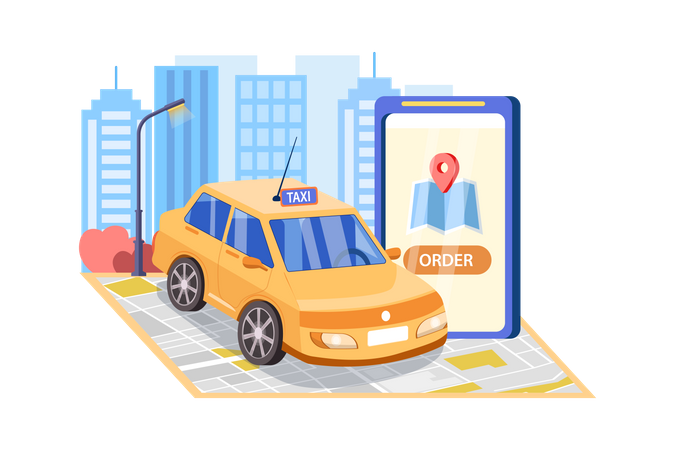- support@alopna.com
- 2nd Floor, Japman Tower, near city park, Mansarovar, Jaipur, Rajasthan 302020
Cab Booking Software



Real-time availability, automated driver matching, and an easy-to-use interface are necessary for instant bookings in taxi booking software. When a user requests a ride, the program instantly looks for drivers in the area. The user is immediately notified when the nearest available driver is matched with them. After being approved, the user gets a tracking number, an estimated time of arrival, and quick payment alternatives for a smooth transaction. This configuration guarantees quick reservations, short wait times, and a seamless experience for drivers and users alike.
GPS technology, mapping service integration, and constant data interchange between driver and passenger devices are all used in real-time tracking in taxi booking software. The passenger app displays real-time updates of the driver's location, route, and estimated time of arrival (ETA) thanks to the GPS-enabled device's continuous location data transmission to the server. With updates in the event of traffic changes, mapping integration guarantees the driver is traveling the optimal path. Both parties are kept aware through notifications, which provide an open and effective tracking system that guarantees seamless and prompt pickups.


By examining current traffic information, road conditions, and the most effective routes to the destination, route optimization is accomplished in taxi booking software. Using algorithms, the software determines the fastest and most fuel-efficient routes while accounting for detours, traffic jams, and road closures. Dynamic updates are made possible by integration with mapping services such as Google Maps, guaranteeing that the driver stays on the optimal path during the journey. By guaranteeing on-time arrivals, this optimization cuts down on travel time, fuel expenses, and improves the passenger experience. Additionally, it helps drivers minimize delays, which improves the overall effectiveness of cab services' operations.
Several safety measures, such as data encryption and payment gateway integration, are used to enable secure payments in taxi booking software. Payment gateways that follow industry standards like PCI DSS, like Stripe, PayPal, or local providers, securely handle transactions. SSL technology is used to encrypt sensitive data in order to guard against unwanted access during the transaction. In order to provide flexibility and security, the software also accepts a number of payment methods, such as cash, digital wallets, and credit cards. Tokenization reduces the risk of fraud by substituting distinct identifiers for sensitive data. Furthermore, two-factor authentication (2FA) fortifies payment security, protecting users and boosting system confidence.


The purpose of driver and customer profiles in taxi booking software is to improve efficiency, security, and customisation for both users. In order to guarantee safety, drivers create profiles with their personal information, supporting documentation, and vehicle specifications. For quicker reservations, customers create profiles with their contact details, preferred payment methods, and other details. In order to enhance the customer experience, both profiles save ride histories, ratings, and comments. Customers get from tailored suggestions and expedited payments, while drivers gain from performance monitoring and designated work zones. For both drivers and passengers, these profiles guarantee a safe, efficient, and customized experience.
Cab booking software's Admin Dashboard gives platform administrators total control and comprehensive insights into how the platform functions. It makes fleet tracking, ride monitoring, and driver and passenger profile management possible. With automated notifications for problems like delays or disputes, administrators can keep an eye on real-time statistics, such as ride data, payment transactions, and driver performance, while also guaranteeing seamless operations. Additionally, the dashboard makes reporting easier, assisting administrators in making data-driven choices that maximize customer pleasure and service effectiveness. The dashboard's safe access restrictions guarantee that only authorized users can handle sensitive data, facilitating efficient and successful service management.


For cab booking software to provide a reliable and trustworthy service for both drivers and passengers, safety and security are essential. To make sure that only authorized users are participating, the platform includes features like document verification, passenger identification verification, and driver background checks. Additional security is provided by emergency features like live ride tracking and an SOS button. To protect financial data, tokenization and encryption are used to process payment information securely. Furthermore, reporting tools and a mutual rating system support the upkeep of a secure environment, and data protection protocols guarantee privacy and adherence to laws like the GDPR.
A crucial aspect of taxi booking software is location sharing, which makes it simple for drivers and passengers to locate one another and follow the journey in real time. The software continuously provides both parties with real-time location data by leveraging GPS technology. While drivers may follow the passenger's location for precise pick-up, passengers can view the driver's position and projected time of arrival (ETA). For extra security, the app might also let users share their current position with reliable friends. By improving ease, transparency, and security, this feature makes sure that both users have a seamless and effective journey.

